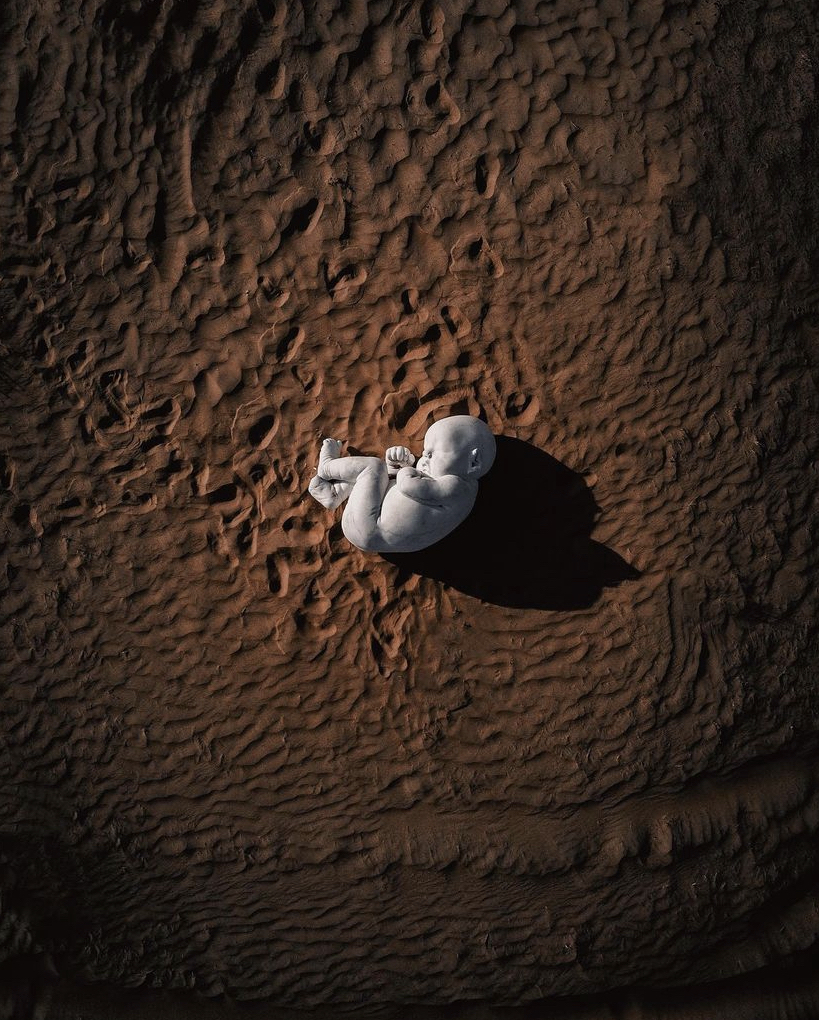This summer, in the striking setting of Thomas Paine Park, Jago’s Look Down sculpture was unveiled in New York City. The chosen public space-named after patriot and visionary Thomas Paine-is historically linked to episodes of suffering, as it formerly housed prisons where many inmates of the American Revolution lost their lives. In this context steeped in memory, Jago’s sculpture fits in as a symbol of human vulnerability, evoking new dialogues and elective affinities.
Look Down, depicting an abandoned child, was born out of a profound observation of the plight of the homeless in New York City. For Jago, each homeless person represents an interrupted childhood, a shattered dream. The artist tells how the idea for the sculpture was born in 2018, during a visit to the city. “Every homeless person was, at one point, a child with a family and hopes,” Jago explains. This thought inspired a work capable of combining social denunciation and reflection on collective indifference to the marginalized.
Made of Vermont marble, Look Down is part of a trilogy along with The First Baby and The Veiled Child. Jago clarifies, however, that the initial intention of the work was not necessarily about children, but rather about dramatic social indifference.
However, the sculpture has often provoked controversial reactions, as happened in Naples, where a group of teenagers staged a beating against the work and filmed the act. Surprisingly, Jago was not outraged by the vandalism, but by the media reaction that followed. “I was up to all kinds of things at their age,” the artist recalled, highlighting a desire to understand young people rather than condemn them, inviting them to his studio for a meeting.
Even in the UAE, Look Down suffered damage, with an ear and finger broken, and the chain at the navel torn off. Yet, for Jago, each act of vandalism becomes an integral part of the work itself, an unintentional but meaningful interpretation. “Vandalism is a form of participation, even if unsolicited,” he says.
La scritta Supreme sul braccio della scultura | foto di Alessandro Berni
Now in New York, the sculpture continues to bear the marks of his scars: a Supreme inscription on his forearm, a scar on his head, and even pebbles stuck in his nose. However, Jago is not talking about overkill, but about normal interaction with a work of art placed in a public space. “I saw people kneeling and praying, children playing on it, people caressing it,” the artist says. Look Down is not just a sculpture, but a container of emotions and reflections, which is enriched with each encounter.
Look Down’s journey is not over yet, and each stage adds new meanings to its narrative. “Surely one day the opera will stop,” Jago concludes, “but I cannot say how long its journey will be.”
The article Jago’s Look Down: creation and destruction together again. This time in New York comes from TheNewyorker.

